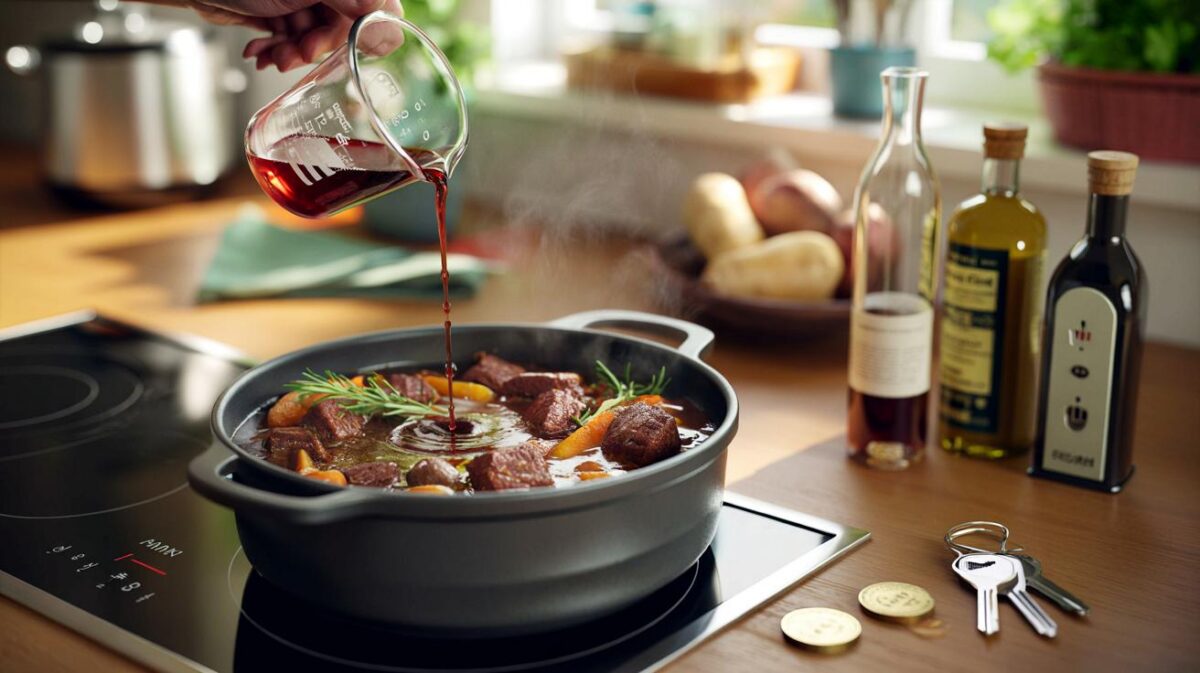A simple extra step has been turning plain porridge into a bowl you’ll actually look forward to. The move is quick, costs pennies, and relies on one everyday fruit and a small knob of butter. Here’s how the method works, why it delivers such a lift, and how to adapt it to your routine.
The 5-minute step everyone can try
Before the oats go anywhere near the pan, take a small apple, chop it into bite-sized cubes, and let it meet a little butter in a hot saucepan. The fruit softens, the edges catch a touch of colour, and the kitchen starts to smell like a bakery. Then, and only then, add your oats and liquid to finish the cook.
Fry the chopped apple in a little butter first, then cook the oats with milk or water. The flavour leaps, the texture improves, and the bowl feels far richer than its cost.
- Warm a saucepan over medium heat and melt about half a tablespoon of butter.
- Chop a red apple into small cubes; tip them into the pan.
- Cook for 3–5 minutes, stirring, until the apple softens and glistens.
- Add 40–50g porridge oats and 250–300ml milk, water or a mix; reduce heat.
- Simmer gently for another 4–5 minutes, stirring until creamy. Sweeten with a drizzle of honey if you like.
You gain natural sweetness from the fruit and a buttery richness, so you can use less sugar and skip cream.
Why it works: a quick kitchen science
Heat teases out the apple’s sweetness by encouraging light browning on the surface. Butter carries aroma compounds and coats the fruit, which helps the flavour spread through the oats. As the apple cooks, pectin loosens and the cubes turn tender but not mushy, adding bite to each spoonful. Oats absorb some of the buttery juices, so the porridge tastes rounded and warm rather than flat.
This isn’t a dessert-style caramel; it’s a gentle savoury-sweet balance. That small savoury note makes honey or maple syrup feel brighter, so a teaspoon goes further.
How much it costs and how long it takes
The method fits weekday mornings. You add about five minutes to the pan time, but the payoff is a bowl that feels café-level without a café price.
| Item | Quantity | Approximate cost (UK) |
|---|---|---|
| Apple | 1 small (120–140g) | £0.20–£0.35 |
| Butter | ½ tbsp (about 7g) | £0.05–£0.08 |
| Porridge oats | 40–50g | £0.05–£0.10 |
| Milk or water | 250–300ml | £0.10–£0.20 (milk) |
Total added time: roughly 5 minutes. Total added cost: roughly 25–40p.
Variations if apples aren’t your thing
You can swap fruit, fat and finish to suit your taste, season and diet. Keep the sequence the same: cook fruit in fat, then add oats and liquid.
Dairy-free swap
Use a teaspoon of coconut oil or a plant-based spread instead of butter. Pair with oat or almond milk. Expect a subtle coconut aroma and a lighter finish.
Microwave adaptation
If you rely on the microwave, soften apple cubes in a mug with a small dab of butter for 60–90 seconds, stirring once. Tip into a bowl, add oats and milk, and microwave in bursts until creamy, stirring between blasts.
Protein boost
Stir in a spoon of peanut butter or a scoop of unflavoured protein powder near the end of cooking. Thin with a splash more milk to keep it silky.
For kids
Use sweeter apples like Gala, chop them small, and finish with a pinch of cinnamon. You’ll reduce the need for extra syrup.
Nutrition and portion tips
A bowl like this brings fibre from oats and fruit, slow-release carbohydrates, and a modest amount of fat for fullness. Half a tablespoon of butter adds roughly 50–60 kcal and a few grams of saturated fat; that small amount helps with flavour and satiety. If you prefer a lighter bowl, use a teaspoon of butter and a splash of milk, then finish with yoghurt.
Keep portions sensible: 40–50g oats per adult gives energy without feeling heavy. A pinch of salt unlocks flavour; add it to the oats before the liquid for better seasoning.
Common mistakes and how to fix them
- Heat too high: the apple scorches before it softens. Use medium heat and stir.
- Chunks too big: they stay firm. Cut small, even cubes for quick, gentle cooking.
- Too much butter: the bowl feels greasy. Start small; you can add a pat at the end.
- Thin porridge: reduce liquid slightly or cook a minute longer, stirring to release starch.
- Bland sweetness: add a dash of lemon juice with the apple to sharpen flavours, then finish with honey.
Make-ahead shortcut for busy mornings
Batch-cook the apple step at the weekend. Gently fry two or three chopped apples with 1–2 tablespoons of butter and a pinch of cinnamon until tender. Cool, then refrigerate for up to four days. Each morning, add a couple of spoonfuls to the pan with oats and milk for the same flavour in less time.
Which apples work best
Red, sweet varieties like Gala or Braeburn give a jammy finish. Granny Smith brings tang and holds shape. Pink Lady sits in the middle with perfume and bite. If the apples are very sweet, cut back on honey; if they’re tart, a drizzle of maple rounds them out.
A small change with big reach
This tweak lifts porridge without turning it into pudding. You get texture from tender fruit, warmth from a touch of butter, and a richer bowl that costs under 50p to upgrade. If you want even more fragrance, dust in cinnamon or nutmeg with the apple, or stir in vanilla near the end. For those counting pennies and minutes, it’s a rare win where flavour, comfort and value pull in the same direction.
If you fancy experimenting further, try pears in autumn, frozen berries in spring, or a chopped date for natural sweetness. The method stays the same, the character shifts, and breakfast keeps feeling fresh without a long ingredient list or a higher bill.









Tried this today and wow—the apple sauté makes the whole bowl smell like a tiny bakery. Texture was spot on: soft bites without mush, and I used half my usual honey. Didn’t feel heavy either. This is going into my weekday rota.
Honest question: isn’t the butter just extra sat fat at breakfast? Does half a tablespoon realyl move the needle on flavor versus, say, a splash of milk?